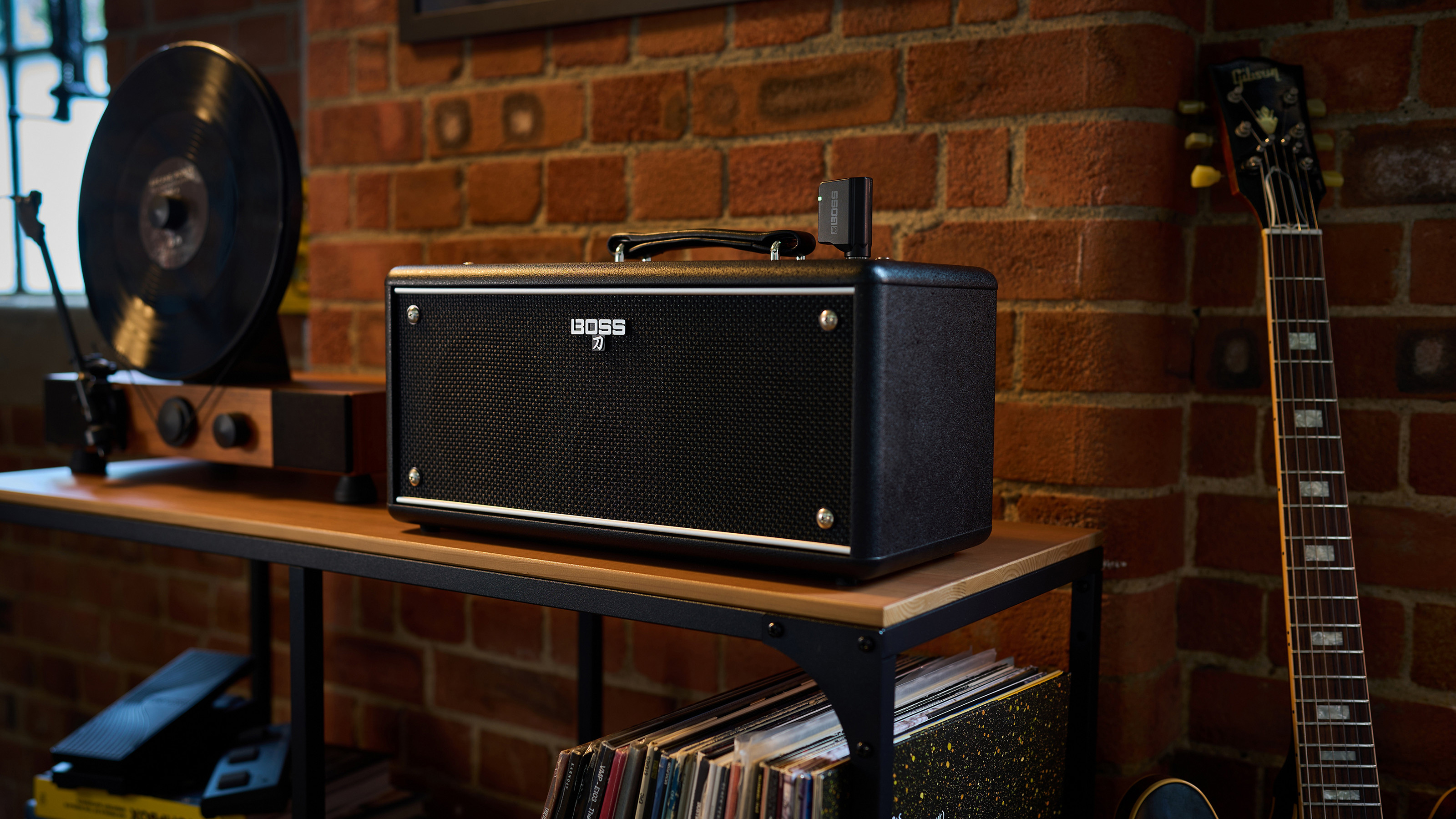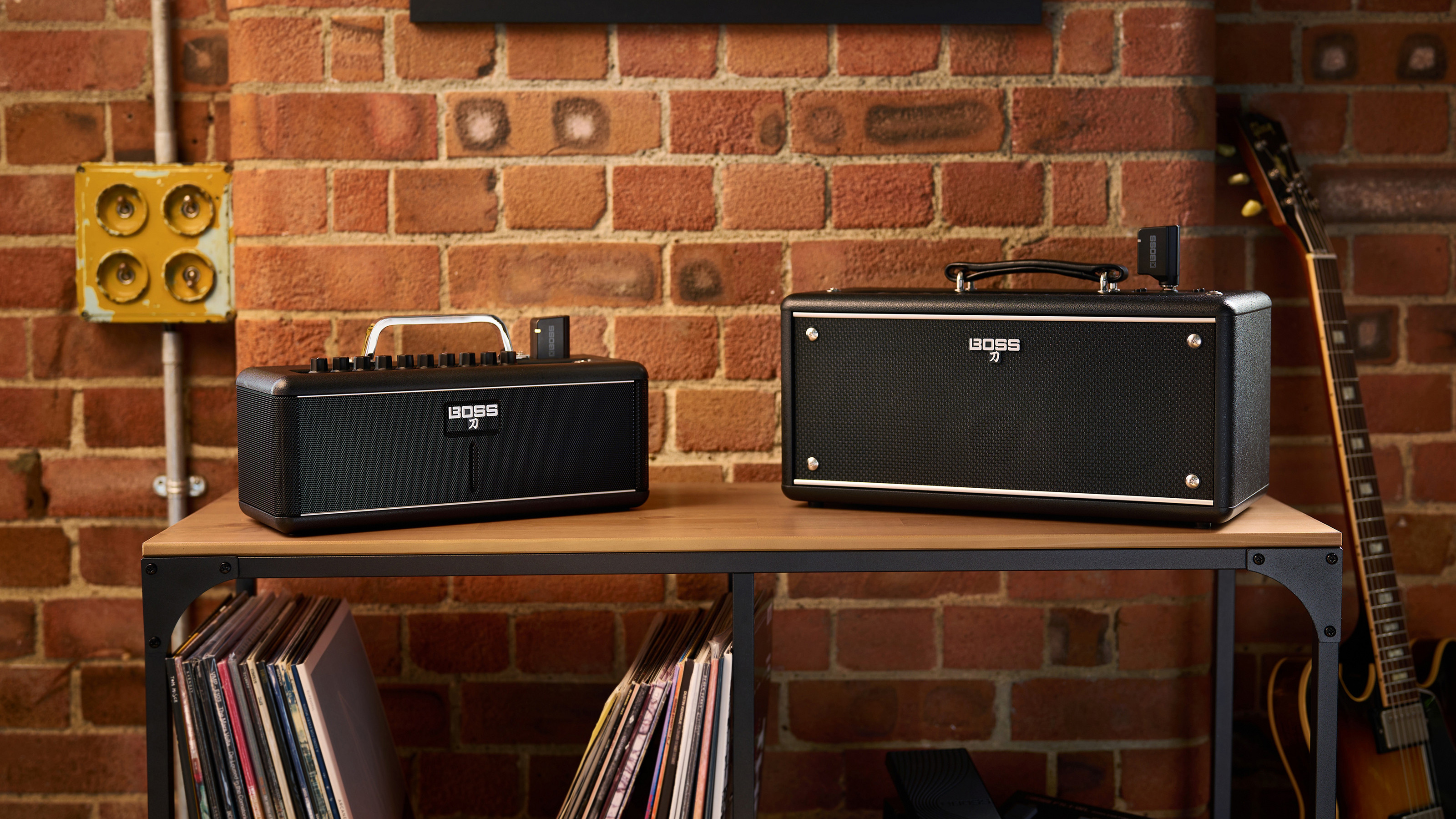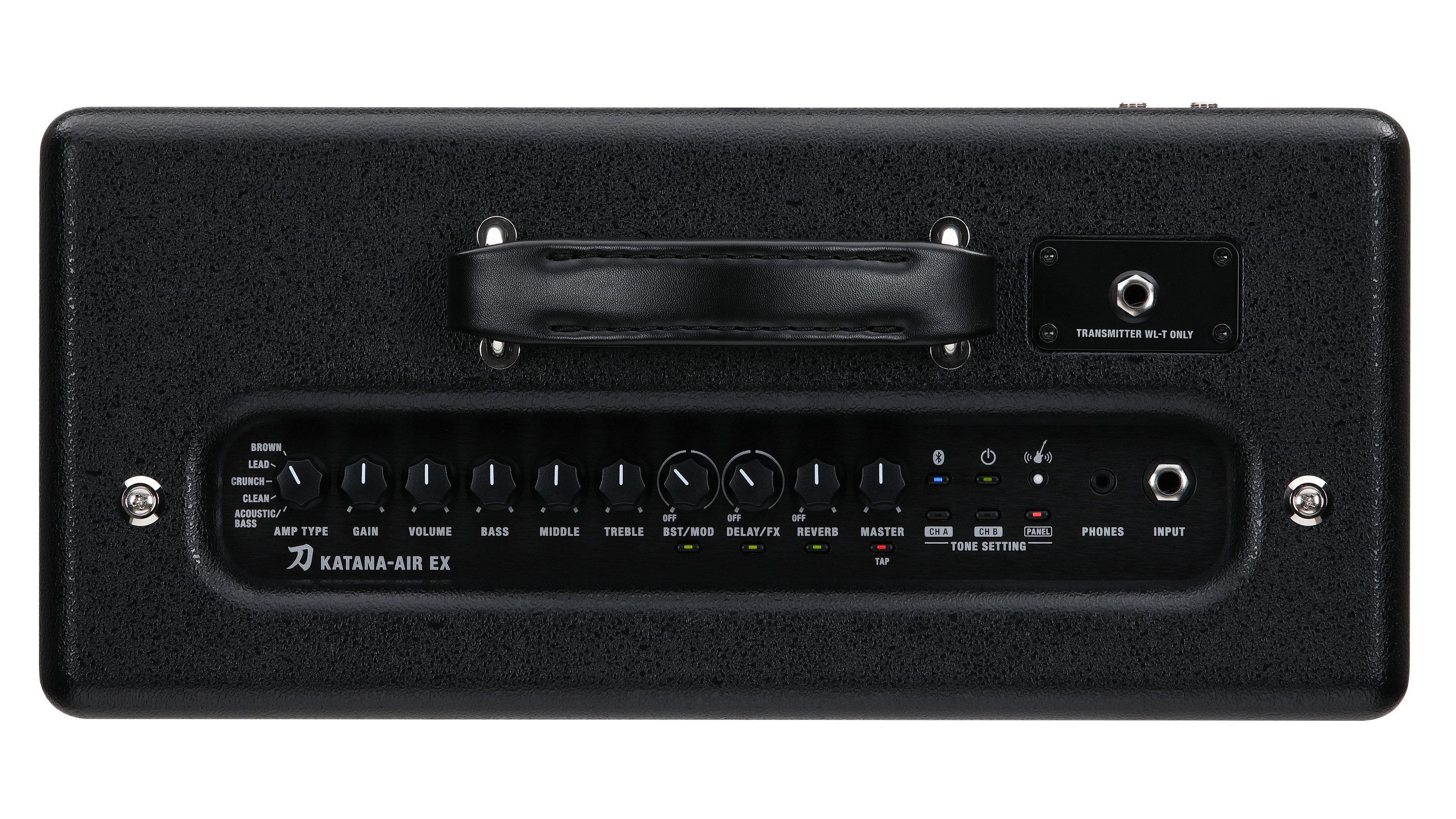
Most people play their guitars at home; all the 100-watt heads in the world won't change the fact that small guitar amps offering great modelling features at low volumes will always have a huge potential customer base. Positive Grid's Spark amps proved it but Boss is in a different stratosphere when it comes to the sales of its Katana line.
Nevertheless, it's not had a fully-fledged contender to weigh in at the desktop amp arena since the impressive Katana Air back in 2018. Enter the Katana Air EX.
With Boss's wireless technology alongside Bluetooth for app connectivity and music streaming, the 30-watt Air set itself apart from the competition when it came out. It even came with the transmitter included, something Yamaha's later THR10IIW didn't offer out of the box. And the experience was freeing; no cables and the Katana's excellent amp and effects modelling out of the box.
It could even run on batteries at a reduced 20-watts. All this came at a £400 entry price that put it into the territory of its bigger Katana brothers, and if you had to choose one amp from the Boss range that might have made you think twice.
Five years on, what's changed? We've seen at least one other guitar news site report on this amp as if it's Boss's first Katana Air. Worrying. It really has to be viewed in comparison with the other model as well as its own merits.
The battery situation hasn't changed but the Roland BTY-NIMH/A Rechargeable Amp Power Pack is an optional extra, not included – that takes the battery life up to 16 hours compared to 7 hours with standard alkaline batteries (output remains at 20-watts).
Our instinct is to say we would have liked to see a rechargeable battery as stock here, but the option of a removable power pack means the unit has potentially a longer lifespan than those tied to an internal Li-on battery that isn't user-replaceable. The bad news is Roland's battery pack is around £99 in the UK but a frankly concerning $149-$199 on US retail sites.
Want all the hottest music and gear news, reviews, deals, features and more, direct to your inbox? Sign up here.
Not good news, but what else are we getting out of the box?

The Katana Air Ex moves things up to 35-watts and it's physically larger – surprisingly so. We're going to say around 30% larger than the original as an estimate looking at the pic above. You can now run delay and reverb effects simultaneously, which is very welcome too.
The new amp has five-inch speakers instead of a pair of 3-inchers. It now has a leather handle and the bass-reflex port appears to be a new addition for enhanced full-spectrum response that could benefit bassists and acoustic guitarists. The new Katana Air-Ex is now advertised as having all-wood housing, too.

The bass-flex port and speakers look to be the most significant new features for musicians, but other than that it seems to be Air business as usual; five core amp models, 60 BOSS effects and six onboard amp presets to call up with control from Boss's newly updated Boss Tone Studio.
None of that really needed changing – it's a winning formula. The underrated original really did sound expansive in the room for a little amp – and this is potentially bigger in that department too.
The potential rub is the price; this is a pricey practice amp. Pricier, I should say too: over on Andertons and Sweetwater the Katana Air EX is being launched at $599/£539 but the original is still on the same retailer's sites for $429.99/£419.
Some may actually prefer the smaller size of the original, and the value of the new bass port and higher output is definitely going to be under focus for musicians here when making the choice between them. And choices are always welcome to have. We'll be taking a closer look at the Katana Air EX soon.
More info at Boss.

Rob is the Reviews Editor for GuitarWorld.com and MusicRadar guitars, so spends most of his waking hours (and beyond) thinking about and trying the latest gear while making sure our reviews team is giving you thorough and honest tests of it. He's worked for guitar mags and sites as a writer and editor for nearly 20 years but still winces at the thought of restringing anything with a Floyd Rose.